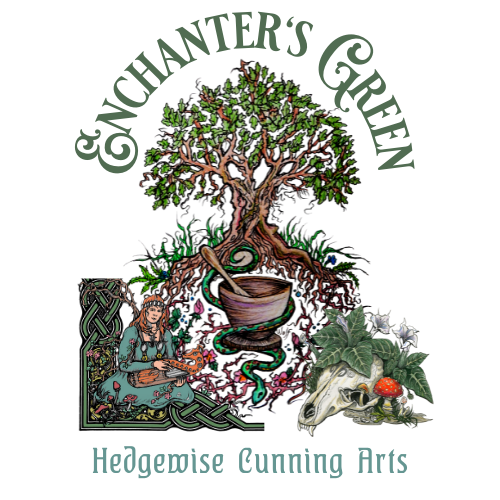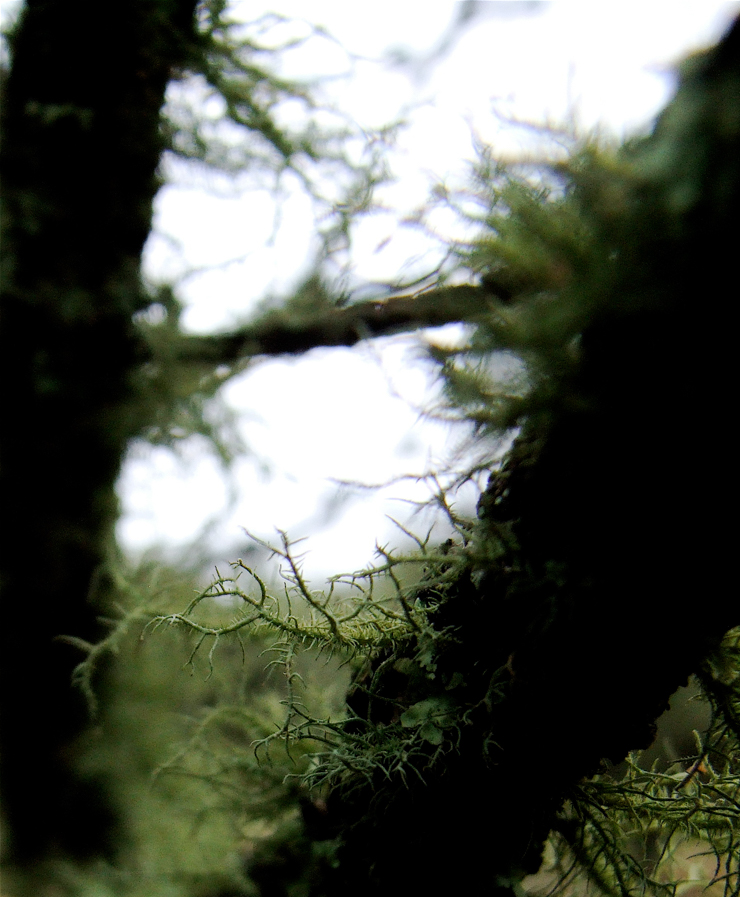Medicine from the Enchanted Forest
Usnea
Common Name: Usnea, Old Man's Beard
Botanical Name: Usnea barbata, U. arizonica and other spp.
Energetics: Cool, dry
Actions/Functions: Clears heat, moves damp, resolves toxicity
When the rains arrive in the Gila, the whole landscape deepens in color and space. It's as if the land, plants and all, takes a deep breath and fills itself out. Mushrooms pop up out of the forest floor, Morning Glory vines spiral upward and the annual Sages burst from seed to flower in the span of only a few weeks. The trees themselves seem to swell and darken with the moisture, and the lichens that live on them often quadruple in size before fruiting wide open. The Usnea is especially beautiful to watch, the delicate and usually dry threads expanding into soft, flexible tendrils that dangle from every Pine and many Junipers.
This is a very effective medicine and every year I have requests from all over the country for trades and to buy it. So many that I often try to teach people to find it locally rather than putting a strain on the canyon's supply. It can be difficult to find commercially but is not uncommon in the wild. One of the best ways I know to positively ID the lichen (because there are look-alikes) is to gently pull a green thready bit apart until you can see the white inner core. If there's no white inner core, it's not Usnea. Often found on Coniferous trees (but sometimes Oaks and others as well), it is sometimes only an inch long and sometimes several feet long, dangling from high branches like some long haired wild forest creature.
As a side note, lichens are not plants. Rather, they are the manifestation of a symbiotic relationship between alga and fungus. Some people say that the Usnea lichen in particular likes to grow in old growth forests and while I don't doubt this is true, I have also seen it in any number fairly healthy third growth woodlands as well. Here it tends to especially enjoy living on dying Pines, though it will it also grow on very much alive Oaks and Junipers. I'm not sure of the effect of the lichen on the trees, and have heard/read conflicting reports. Stephen Buhner has suggested that Usnea serves as the lungs of the forests they grow within, and in some way support the overall health of the ecosystem. I don't know if this is literally true or not, though it is a very nice thought. Whatever their relationship with the trees, they do not seem to act as parasites or to harm them.
When gathering Usnea try to harvest after storms when lots of the lichen will have been knocked on the forest floor. Don't harvest it from heavily polluted areas, as it is reported to be especially vulnerable to absorbing heavy metals and other unpleasant substances.
The Usnea are their own delicate medicinal miracles. They have a special affinity for rebalancing bacteria and eradicating infection throughout the mucus membranes, from mouth to lungs to gut to urinary tract and on. This medicine is a special gift for those with signs of infection in the lungs and bronchial area, often indicated by yellow or green phlegm, chest pain, difficulty breathing and sometimes accompanied by a fever.
•The energetics of Usnea are cooling and drying,
• it is broadly indicated for nearly any infection (especially those of the mucus membranes) with symptoms of heat, or heat with moisture.
•It seems to have the strongest, quickest effect on the lungs and bladder and is often used for infections associated with those organs. Even very serious infections such as pneumonia can respond very well to a strong Usnea tincture.
While I don't particularly like speaking of herbs in terms of what they kill or the trendy anti- whatevers, I do find it useful to know what bacteria Usnea is most effective against.
•Gram-positive bacterias such as strep and staph seem most effected by this unique herb, and acts through disrupting/destroying the bacterias' metabolism.
•It also seems to have an effect on the body's ability to heal and protect itself, generally strengthening response to infection or excess heat while also dealing with the bacteria.
•I suggest that Usnea only be used in cases of infection associated with heat in order to avoid over-cooling the constitution of an already cold person.
•Usnea can also be used externally for outbreaks of staph, cellulitis, or infected wounds.
•I generally use the powdered herb or the diluted tincture, the herb does not extract very well into water without first catalyzing the herb with alcohol.
•The moistened herb also makes an excellent bandage to be used directly on the wound or affected area. Rarely, someone has a dermatitis like reaction to the lichen, this is more apt to happen when the herb is very dry and moistening it first may help.
•If a skin reaction occurs, discontinue use.
This special wild being contains an extraordinary medicine, and also has a primal presence that brings us back to our earthiest, bare-footed selves. Back to the children playing beneath the trees at twilight winding their small fingers in the loose ropes of Usnea hanging from the canopy above.

